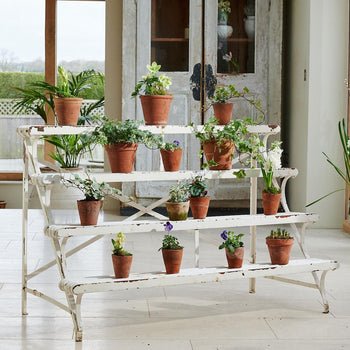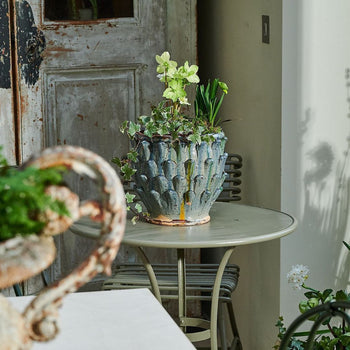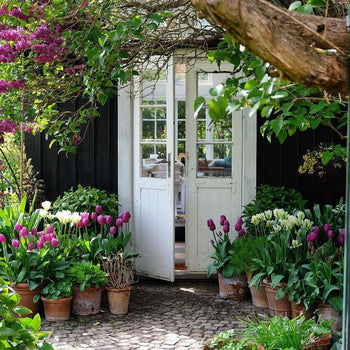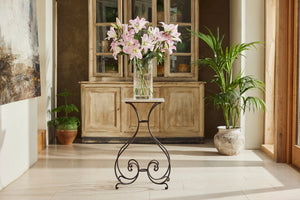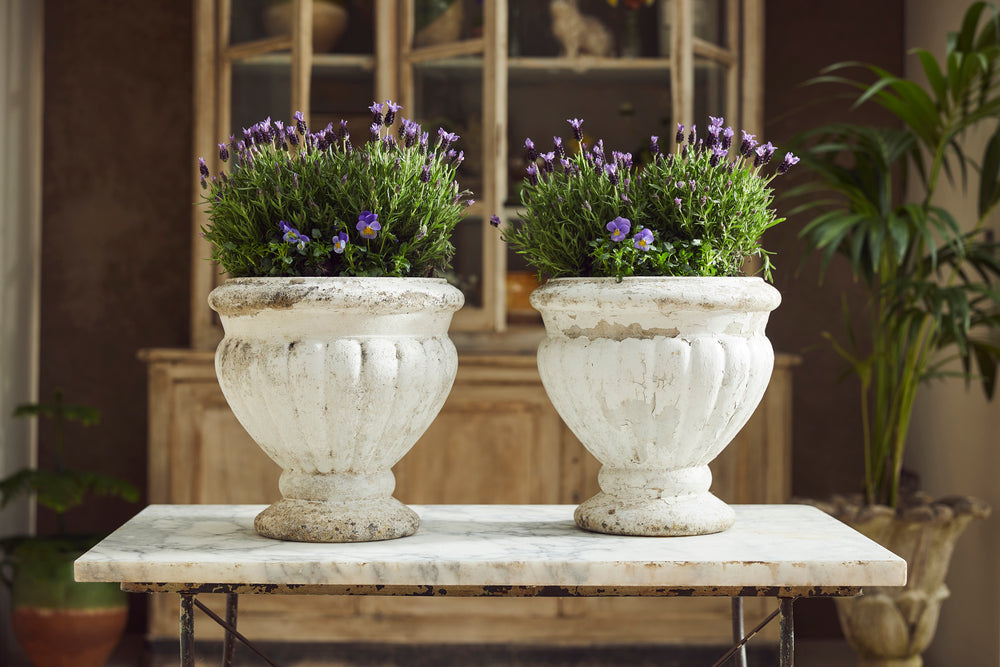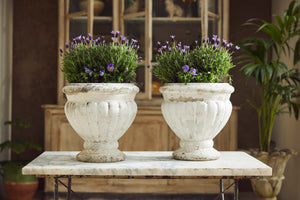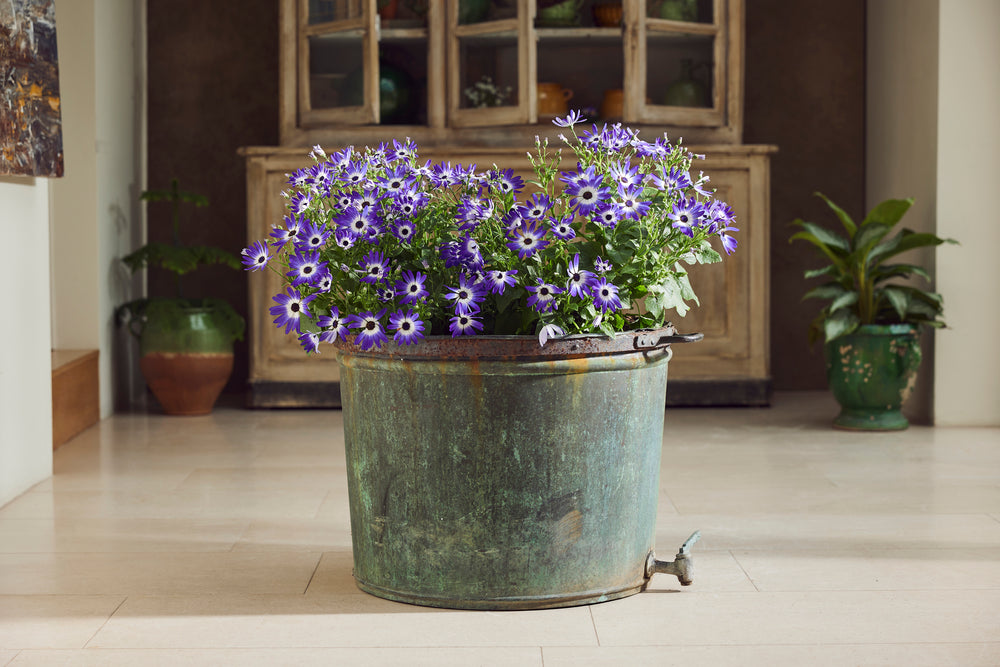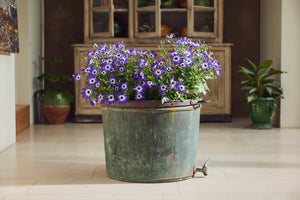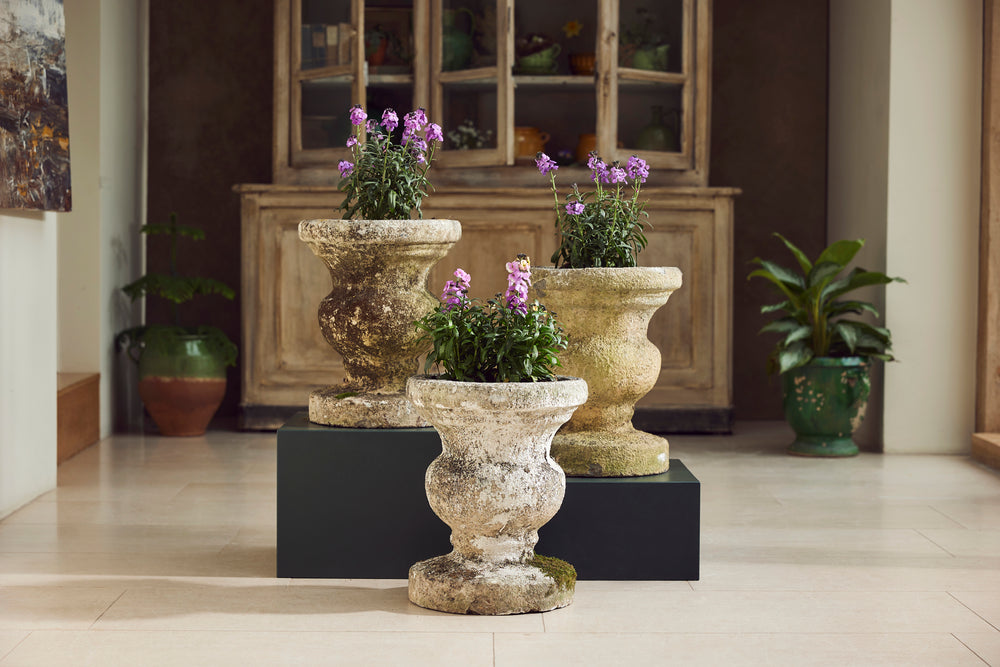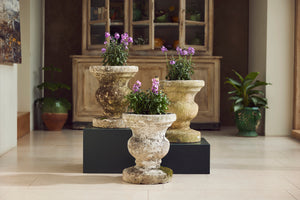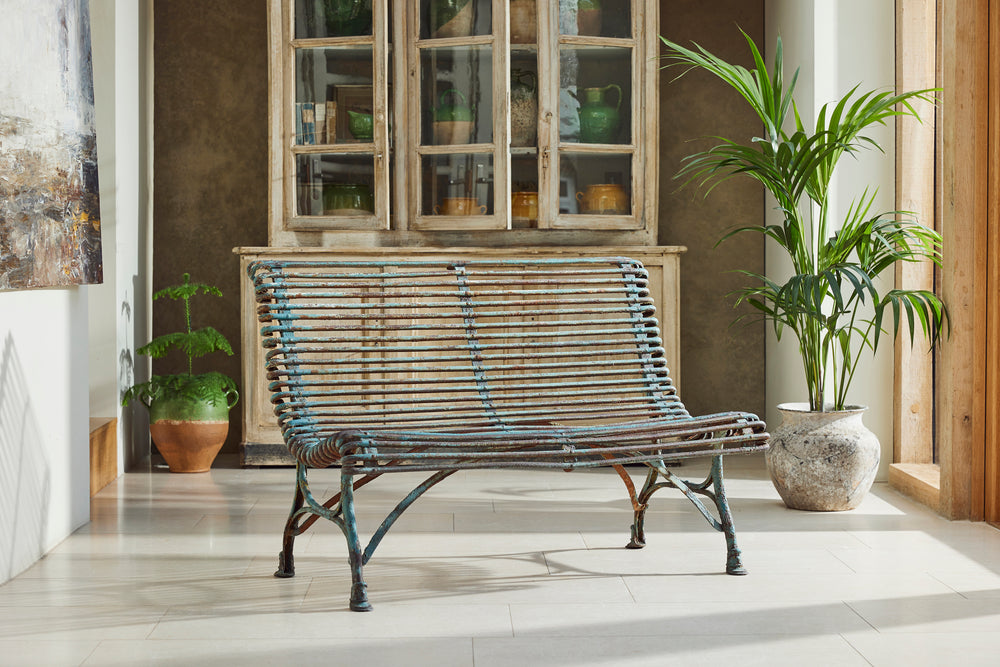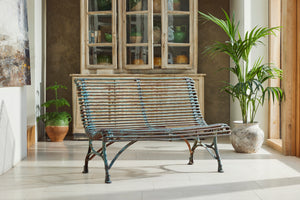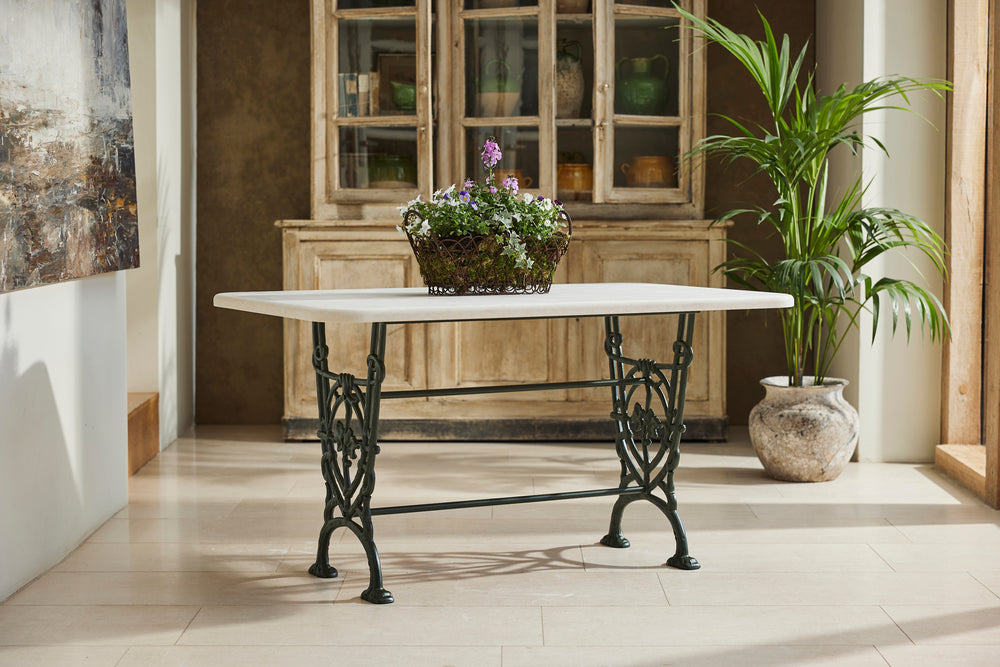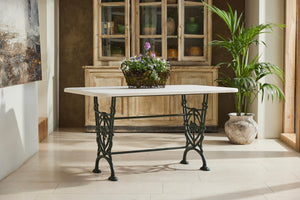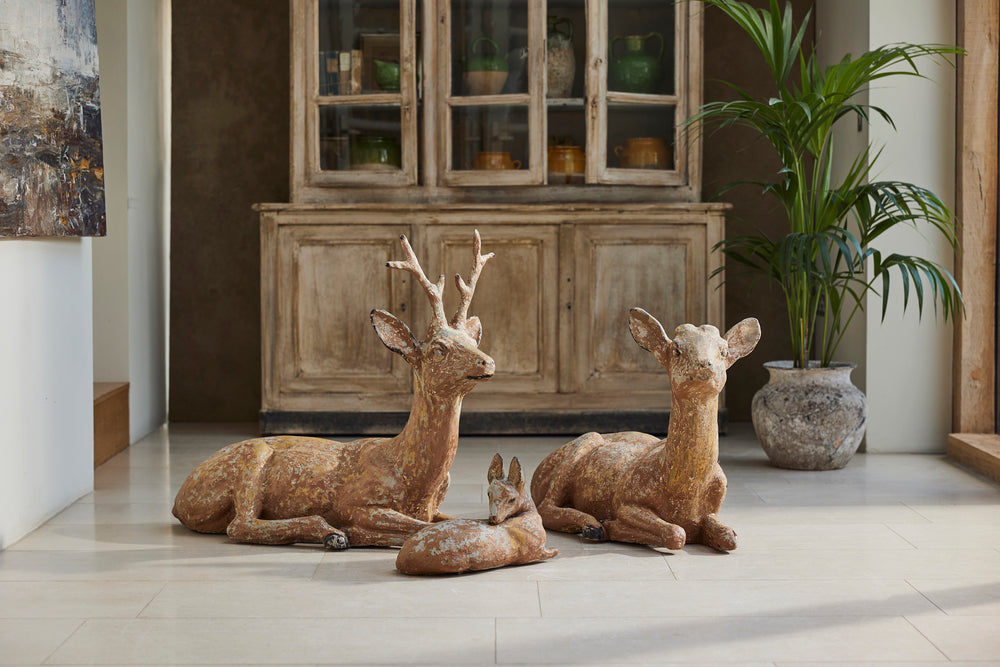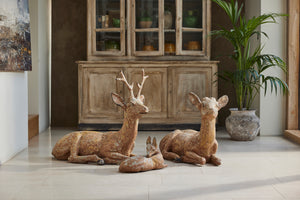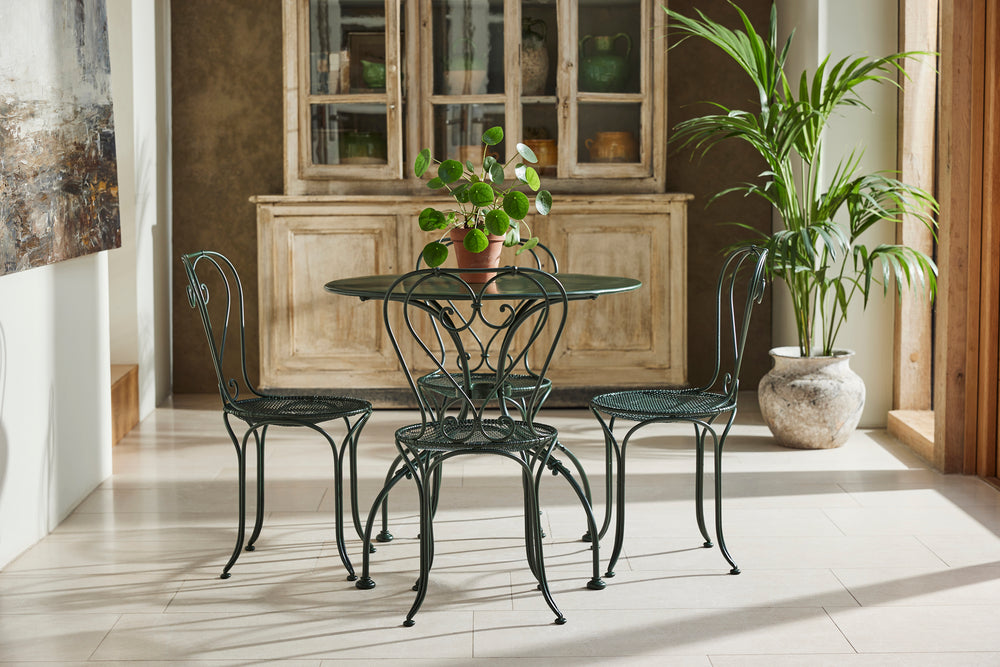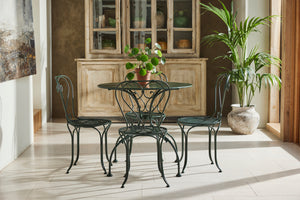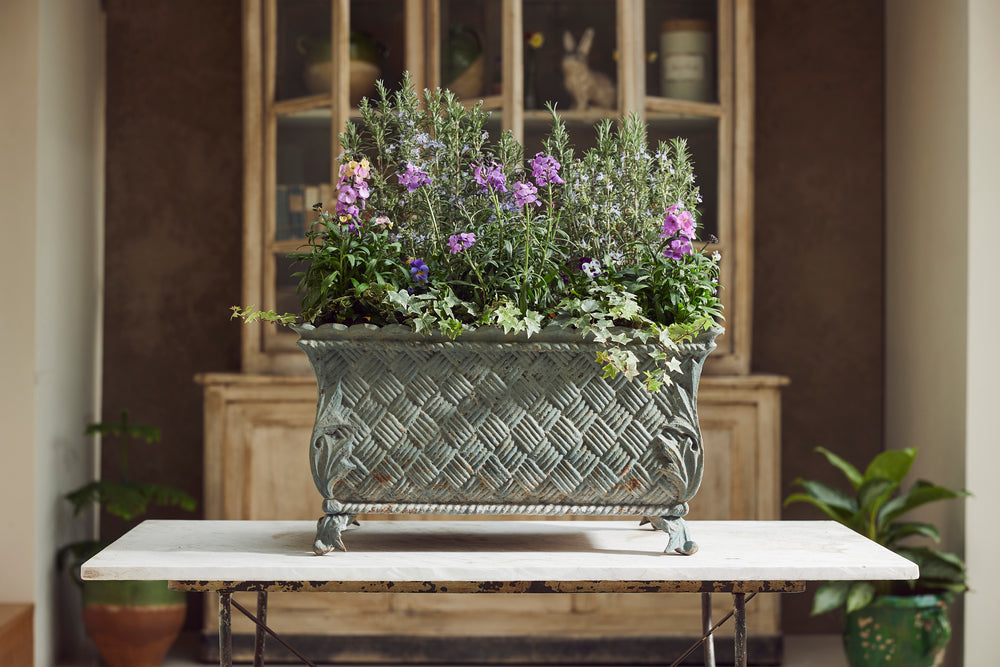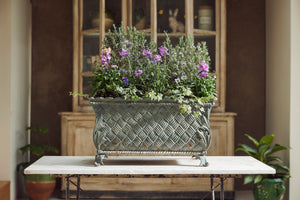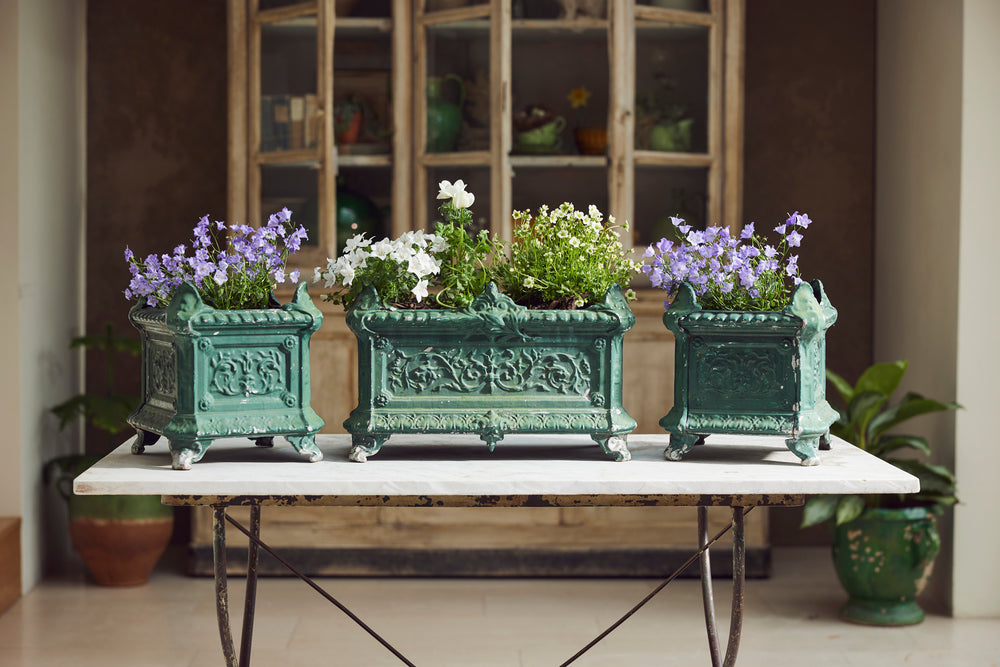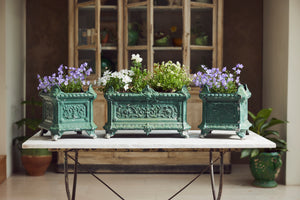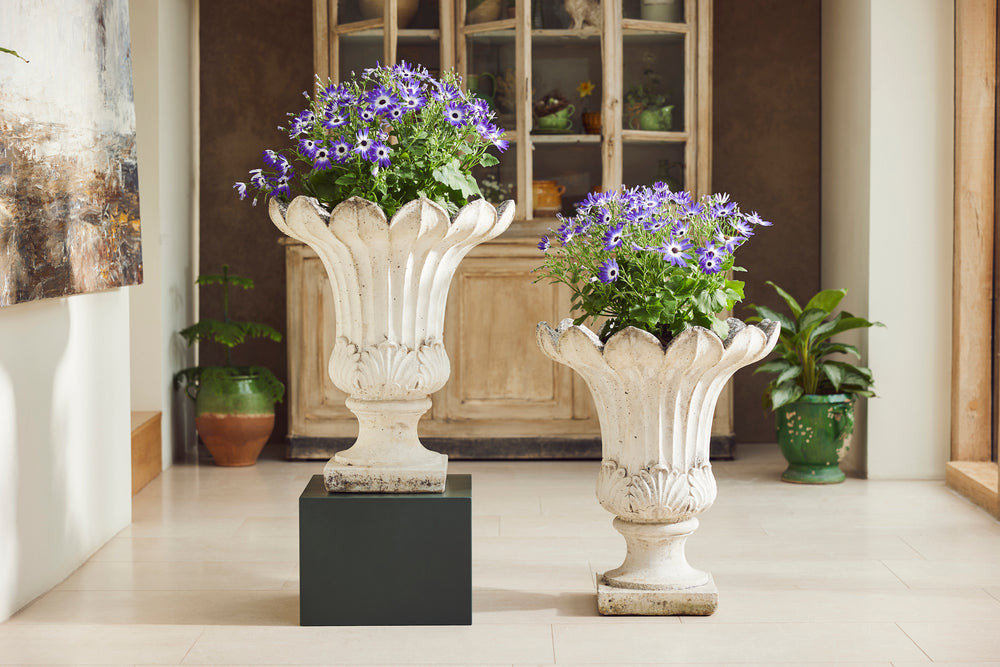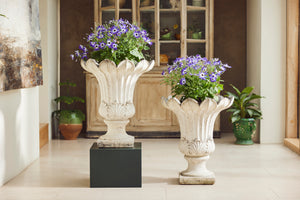In this post, I will share the history of this style of antique garden furniture and inspire you with some of my favourite examples of Arras.

A Brief History of Arras Furniture
The French antique garden furniture style Arras is named after the town where it was created, Arras in Northern France. The style emerged around 1840 when the Grassin-Baledans factory, one of the three companies manufacturing metal products in the town began, to specialise in garden furniture and started producing artistic ironwork.

With welding not used at the time, all authentic Arras pieces are entirely hand forged and riveted, using ‘fer elegi’ and ‘fer plane’ or metal tubing and flat metal. The wrought iron has a very distinctive look and the furniture was intended for the high-end market at a time when the privileged classes were discovering the benefits of outdoor living.
All types of garden accessories, including garden chairs, plant stands and benches were made to the highest quality and durability. This commitment to quality, coupled with the striking and distinctive style, made Arras pieces incredibly fashionable and they adorned parks and public spaces throughout France during the late 19th and early 20th century.
Collectable Garden Antiques
The features of quality cast iron work and the unique heritage from the town of Arras are the very reasons that make this style so collectable today. Production stopped due to the start of WW1 when production turned to munitions.

Pre-1900 Arras Furniture has claw feet and post-1900, the design changed to hoof feet.
Collectors wishing to date a piece of Arras must, rather interestingly, look at the feet. Originally embellished with lion paws, this changed to horse hooves after 1900, primarily to reduce production costs but incidentally giving a smoother and sleeker design that is often more desirable. We also lookout for a small brass plaque with the factory’s name stamped into it that was attached to each piece as it was completed.


The charming effect of the patina formed by the many layers of paint, which would have been lovingly applied to the bare metal over the years is another element that contributes to the unique style and beauty of Arras furniture. The colours can vary depending on the paint used and we have seen plenty of different examples of this original French antique garden furniture.

If you would like any help sourcing original Arras garden furniture, please do not hesitate to get in touch. Alternatively, sign up to our emails to be the first to know about new pieces or follow us on instagram.





